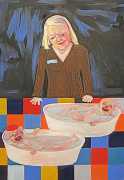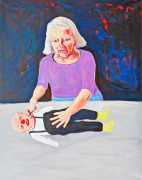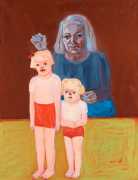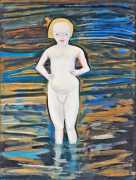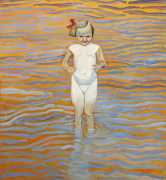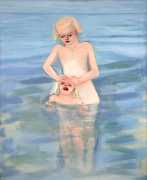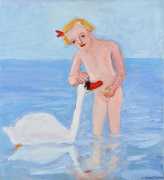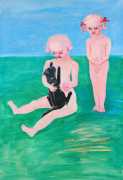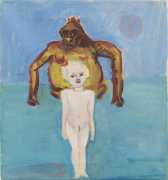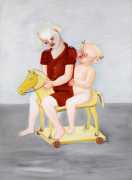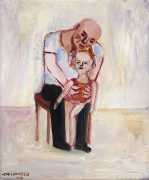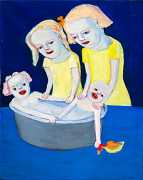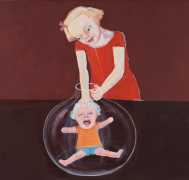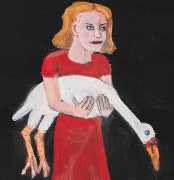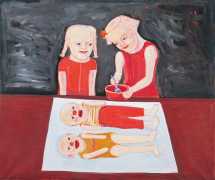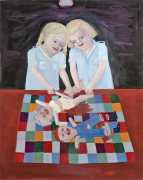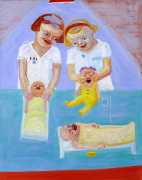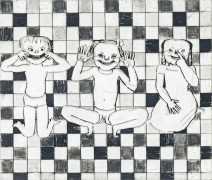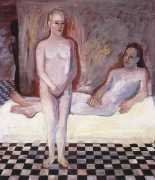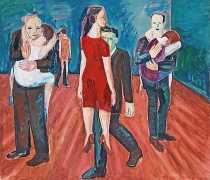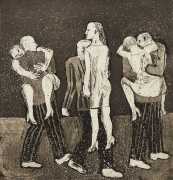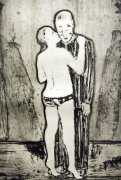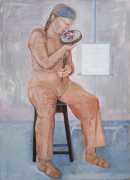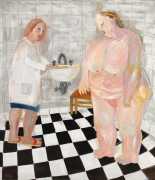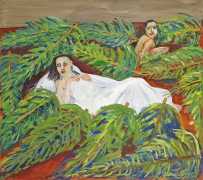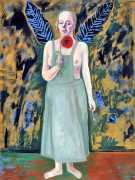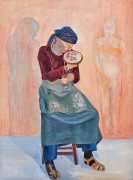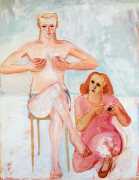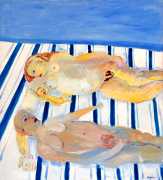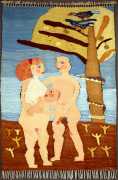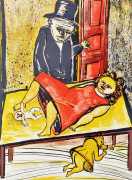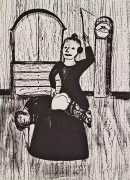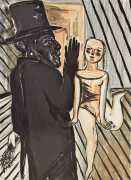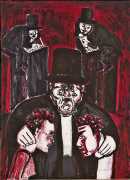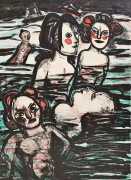 The Swedish artist Lena Cronqvist has built a reputation based on a deep and honest exploration of what it means to be part of a bourgeois Scandinavian family-based culture with its emphasis on maternal care and attention, and growing up in a family atmosphere with all its rewards and inevitable tensions. Her art has been described as matter-of-fact and expressive, depicting the drama that unfolds within the confines of the family.
The Swedish artist Lena Cronqvist has built a reputation based on a deep and honest exploration of what it means to be part of a bourgeois Scandinavian family-based culture with its emphasis on maternal care and attention, and growing up in a family atmosphere with all its rewards and inevitable tensions. Her art has been described as matter-of-fact and expressive, depicting the drama that unfolds within the confines of the family.
Lena Cronqvist grew up in Karlstad, where her father was an accountant and her mother a social worker. She trained in painting in Bristol in England, then in 1958–9 at the Art School in Stockholm, where her grandfather had been the principal, and the Royal Academy of Arts in Stockholm from 1959 to 1964. She had her first solo exhibition at Galerie Pierre in Stockholm in 1965. Lena Cronqvist married the writer Göran Tunström in 1964, and is the mother of the director Linus Tunström.
From 1964 Cronqvist’s choice of motifs and colours changed radically compared with her academy days, marking a clear departure from mainstream Swedish painting. Her breakthrough came in the 1970s, with her deceptively simple paintings of everyday subjects relating to the family and the maternal ideal.
 Much of Cronqvist's art reflects memories from growing up in a ‘normal’ Swedish family, but crises in her life have also played a significant role in the choice of motifs. Problems during her pregnancy in the early 1970s at St Jörgen’s hospital in Gothenburg led to a series of paintings of her own experience of treatment and of fellow patients and staff, while her parents’ deaths in 1980 and 1987 resulted in a number of paintings on the theme of loss.
Much of Cronqvist's art reflects memories from growing up in a ‘normal’ Swedish family, but crises in her life have also played a significant role in the choice of motifs. Problems during her pregnancy in the early 1970s at St Jörgen’s hospital in Gothenburg led to a series of paintings of her own experience of treatment and of fellow patients and staff, while her parents’ deaths in 1980 and 1987 resulted in a number of paintings on the theme of loss.
The art critic Mårten Castenfors writes of her work, ‘Lena Cronqvist has gone her own way. Perhaps precisely because of this, this wayward artistry has had enormous significance for a younger generation of artists. Through Cronqvist, it was suddenly allowed to paint large and private, to descend into murky waters and into bourgeois hypocrisy, to expose one's own nakedness, to paint sadness.’
Yet Cronqvist's images should not only interpreted only as private musings, for their strength lies in the connections between the private and the public. The paintings invite identification and difficult feelings around important subjects which are too often taken for granted.
Cronqvist's paintings are among the works of art by living Swedish visual artists that have sold for high prices at auction in Sweden since the 1990s. In May 2010, for example, her Madonna was sold for SEK 5.1 million (£360,000) at Bukowski’s Moderna auction. In 1998 she was awarded the title of professor, and is a member of the Academy of Fine Arts. She is one of the few Swedish visual artists who enjoy a government income guarantee for artists.
We are very grateful to our Russian friend Yuri for suggesting the inclusion of this artist, and for supplying most of the images.



